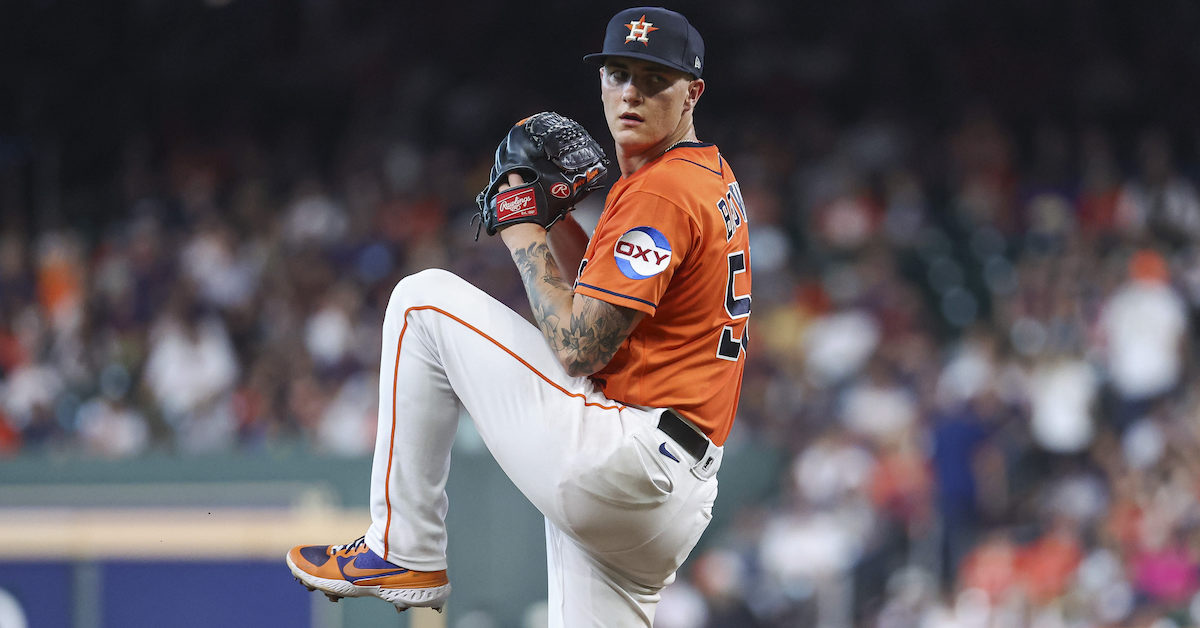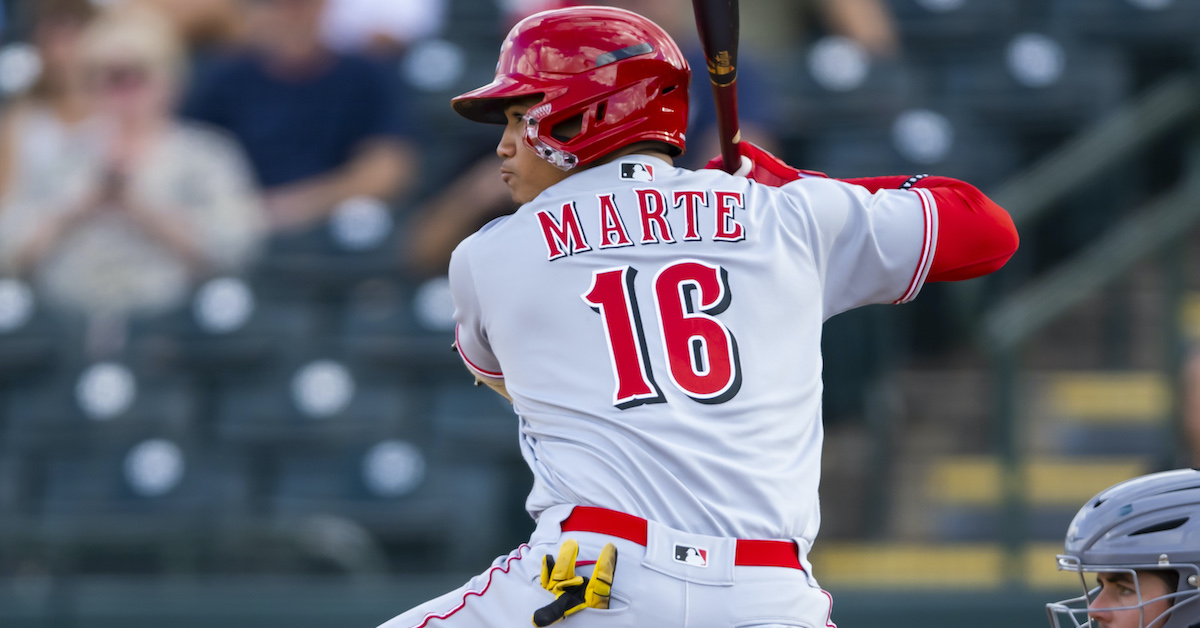It’s Time To Get Excited About Oneil Cruz and Elly De La Cruz

How about this: How about you and I forget for a couple minutes that we’re at FanGraphs, deep in the stat-swamped soul of the sabermetrics community? Let’s just pretend you’re reading an article on a website with a name like SuperCoolBaseballStuff.com. This is not the time to get lost in the weeds. Spring is in the air, and we’re rhapsodizing about the smell of the freshly cut grass. The birds have returned, and they’re waking us up at dawn with their incessant noises. Now is the time to be excited about baseball (and annoyed about the birds), and quite simply, nobody does more exciting stuff on a baseball field than Oneil Cruz and Elly De La Cruz. So let’s keep it simple. Let’s talk about all the superlatives that make the pair so exciting as we race toward the 2024 season.
For the first time, both Cruz and De La Cruz will be in the show at the same time. Cruz was called up for good in June 2022, and he finished the season on a high note, running a 133 wRC+ over the final month. He came into 2023 with the stated goal of a 30-30 season, but in just his ninth game, he fractured his left fibula during a collision at the plate. De La Cruz was called up in June 2023 and promptly went supernova. He ran a 179 wRC+ with eight stolen bases and 10 extra-base hits over his first 16 games, but struggled over the last few months. This year, they’ll be the Opening Day shortstops for their respective teams, and Cruz is on record saying that his ankle feels not just 100%, but 200%, which may very well be a record.
Somehow, the two players are extremely similar while also being completely unprecedented. The similarities start with their surnames, and then there’s the fact that they’re both young, ridiculously tall shortstops who hail from the Dominican Republic and play in the NL Central. The height thing is likely a bigger deal than you realize. Cruz is 6’7” and De La Cruz is 6’5”. According to Stathead, that makes them just the seventh and eighth players ever to be 6’5” or taller and play a single inning of shortstop in, ahem, the bigs. They’re the only ones ever to be regular starters at the position; those other six combined for a total of 113 games at short. You’re not going to believe this, but until Cruz dethroned him, the leader was Michael Morse, with 57 games. The 6’5” Morse, who finished his career with -73.2 total defensive runs, totaled 450 innings at short for the Mariners in 2005, racking up -13 DRS and a UZR/150 of -20.9.
Cruz and De La Cruz have both played in exactly 98 big league games, and their skillsets are nearly identical, as well. They’ve both walked 35 times, struck out 33.7% of the time, and posted batting averages and on-base percentages within two points of one another. Here’s what that similarity looks like courtesy of some cherry-picked Baseball Savant sliders:

Not that it matters much, but 2022 Cruz is on the left and 2023 De La Cruz is on the right. There’s so much red and so much blue. These are insanely fun profiles. Cruz and De La Cruz do everything at 100 miles per hour, except for hitting the baseball, which they do at 120. They run like cheetahs who were genetically modified for maximum speed and then shot out of a cannon. They crush baseballs like PETA-members who just found out that the baseballs were responsible for performing the illegal experiments on those cheetahs. They throw the ball over to first as if they heard you get an extra out if you manage to blast it right through the first baseman’s solar plexus. They whiff like they think they can generate enough wind power to solve the climate crisis all by themselves. They’re boom and bust personified. They’re the middle schoolers who figured out that you could game the typing test by absolutely going for broke, because 150 words per minute minus a 50% error rate still leaves you at 75 words per minute. They’re like basketball played on roller skates. It’s poetry when it works, carnage when it doesn’t, and impossible to turn away from.
As for whether the whole package will work, well that’s trickier. Here are the final grades the two players received from our prospect team upon graduation:
| Tool | Oneil Cruz | Elly De La Cruz |
|---|---|---|
| Hit | 30 / 40 | 30 / 40 |
| Game Power | 40 / 70 | 45 / 70 |
| Raw Power | 80 / 80 | 60 / 70 |
| Speed | 60 / 45 | 80 / 70 |
| Field | 40 / 45 | 45 / 55 |
| FV | 60 | 60 |
Again, the numbers are very similar, but Cruz, all of two inches taller, has a tougher path defensively. He’s always been capable of making a great play, but he’s never looked like a sure thing at short, in terms of either range or hands, and he didn’t look at home in left field when the Pirates tried him out there in the minors. In 2022, he graded out as a hair above average according to DRS, but the other defensive metrics didn’t love him. As he continues to fill out, he’s less likely to maintain his speed and range. On the other hand, he owns a career 106 wRC+. He managed to cut his chase and whiff rates toward the end of 2022. In the short samples of 12 LiDOM games and nine MLB games, he boasted vastly improved walk and strikeout rates in 2023. Those trends have now held through nine spring training games as well, long enough for Cruz to tie for the MLB lead with five homers.
As Robert Orr demonstrated over at Baseball Prospectus, the switch-hitting De La Cruz made his own plate discipline gains during the 2023 season, going from a 38.8% chase rate in July to 25.7% in September and October. In fact, according to Pitcher List, by the end of the season, his swing decisions were well above average.

Although he ended the season on a low note in terms of performance, De La Cruz actually posted a .334 xwOBA in September and October, his best figure of the season by a wide margin. De La Cruz put up a 24.5% HR/FB in 2023, 10th-highest among qualified players, but that masked the fact that his 53.9% groundball rate was the 11th-highest. It’s possible that chasing less soft stuff below the zone will help him to put more balls in the air going forward. Even if that doesn’t happen, it’s possible that he’ll just keep hitting the ball hard enough that he doesn’t need to lift it very often to do damage. Moreover, De La Cruz is better positioned to stick at shortstop. He graded out well according to OAA and UZR, though DRS and DRP were less impressed. Importantly, he’s also just 22, and he has time to improve. Although he put up just an 84 wRC+ last year, his defense and his propensity to take any and every base helped him put up 1.7 WAR in his 98 games.
For both players, the future has some truly massive error bars. They’re just 22 and 25 years old, and they’ve yet to play a full season’s worth of games. With apologies to Michael Morse, there just aren’t many comparable players we can look to for insights on their development. Their tools are so preposterous that their ceiling is somewhere out by the asteroid belt. But their long levers and their unproven eyes could keep them from ever making enough contact to take advantage of all that power. All the same, even if they just manage to stick it out as league-average shortstops, they’ll achieve it by way of some of the most electric, entertaining baseball the world has ever seen. They’ll also be doing it in an era where each 100 mph throw from deep in the hole and each 122 mph rocket off the bat can be tracked and marveled at in all its gaudy splendor. It’s time to get excited.












